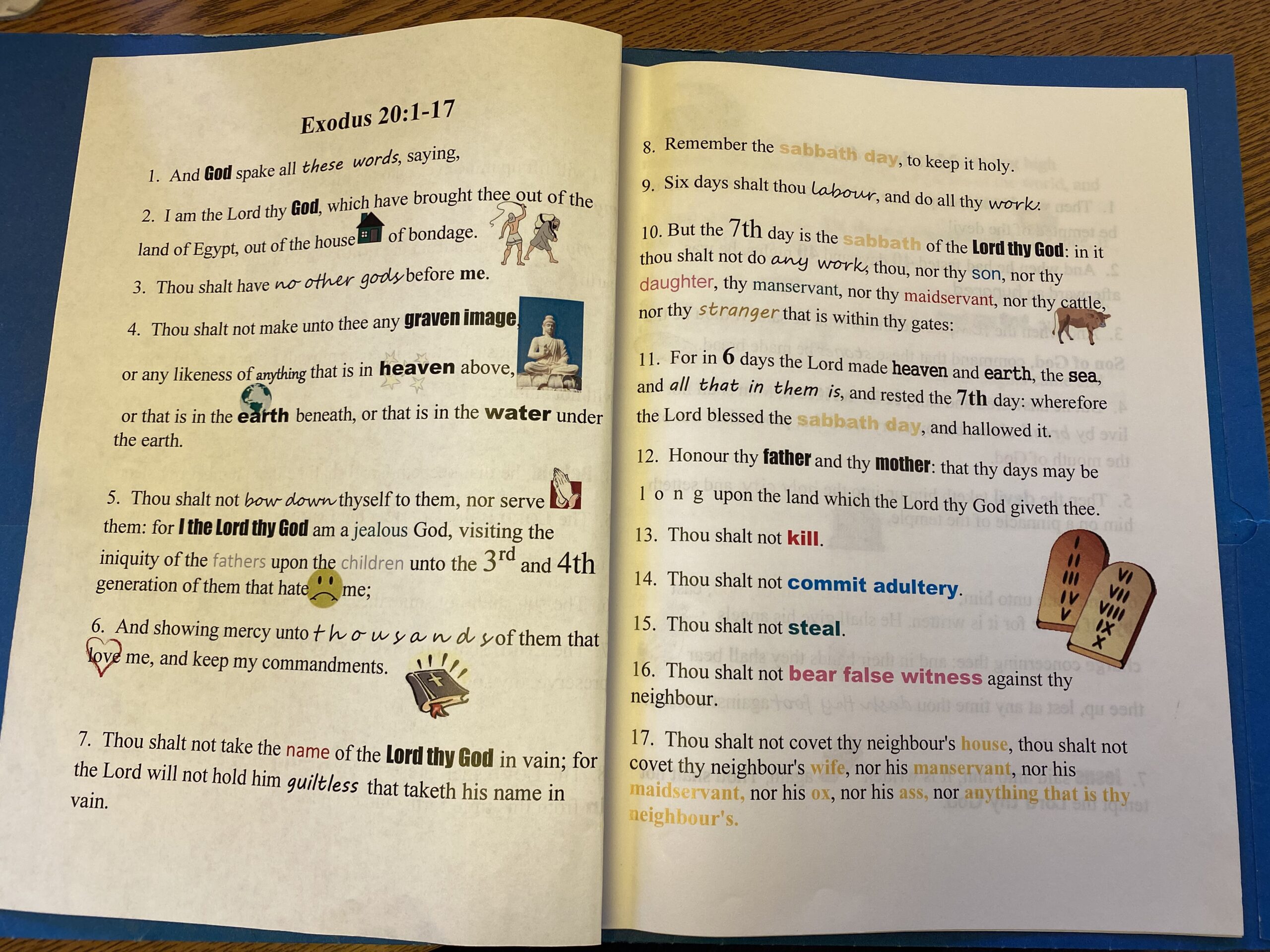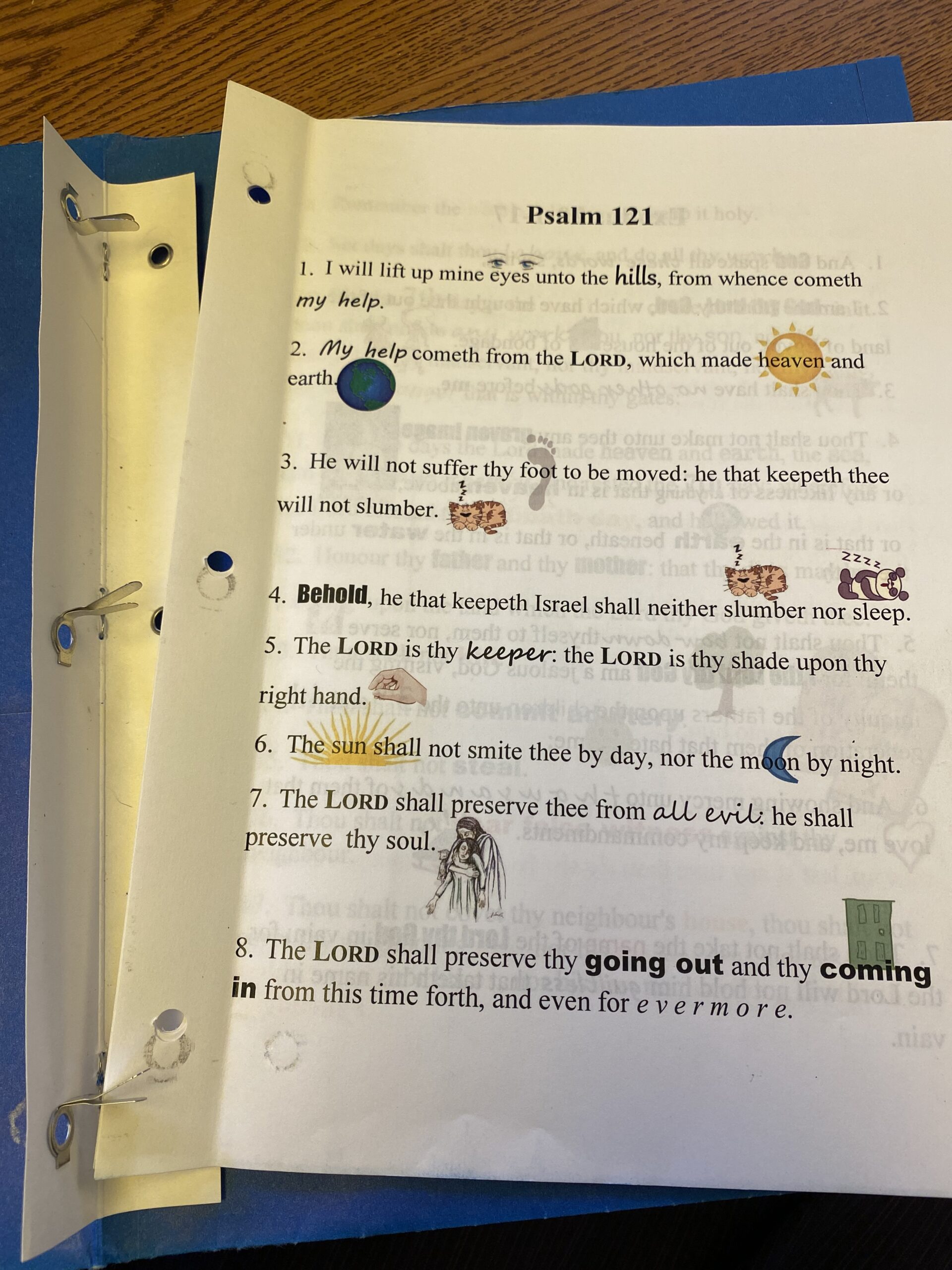Bible Memory Tools
★★★★★

The Word of God is living, powerful, and precious. Because of this, it is of inestimable value to have God’s Word become deeply ingrained in the hearts and minds of our children from a very young age. But while we may all agree on its importance, robust and meaningful Bible memorization can be difficult to achieve.
Some of you know all too well the excruciating, time-stealing frustration of listening to students try to recite their Bible Memory to you when they really don’t know it. Over the years, I have learned to implement various practices that have resulted in most of my third graders being able to recite their Bible Memory quickly with few or no mistakes. First of all, at the beginning of the year I print out the year’s memory passages and put them in a binder folder for each of the students to use throughout the year. To aid the visual learners, I include clip art and use various colors and fonts for the text (see photos below).
Our school has a prescribed list of Bible passages that students learn each year, and most passages we learn in third grade are ten to fifteen verses long. I split the passages into sections of two to four verses, depending on verse length, and we learn a section per week. After we have learned each section, we go back and review the whole passage.
The students are expected to recite the week’s verses to me each Wednesday. I usually have them do this individually while the class is completing their handwriting practice, but they also have the option of saying their Bible Memory to me in the morning before school begins or at break time. This is especially helpful for students who don’t like to be put on the spot and would rather not have the whole class listen when they are saying Bible Memory.
We practice Bible Memory for several minutes each day at the end of Bible class. On Thursday morning, I introduce the next week’s verses, and we discuss the meaning of the passage, particularly the difficult words. Throughout the week, we review these words and their definitions, as well as the general meaning of the passage. Then we read the verses aloud together, using good expression and voice inflection. Especially for the kinesthetic learners (those who learn best by action and movement), we add motions. I do not think it is irreverent to make these fun and sometimes quirky. If we do not believe that the Bible is a dry and boring book, then I don’t know why we would teach it in a dry and boring way.
Saying Bible Memory with all the expressions and motions can be a great way to get students up and moving in between classes throughout the day. Besides the concentrated practice time in Bible class, we practice our verses two to three times a day by standing and saying the verses together. Sometimes I have the students take out their folders and read the verses. Often, I will simply say one phrase at a time and have them repeat it after me.
Occasionally, I have my students read the passage by having each person take turns to read one word at a time as we go around the room. This is a good exercise in focus and following along, and it forces them to pay careful attention to each word. Most children enjoy the challenge of trying to do this quickly without getting mixed up.
I encourage the parents to have their child practice saying the week’s Bible Memory passage to them the day before they need to say it at school. If a child often has trouble saying Bible Memory, I ask the parents to help them study more at home.
I pray that the verses we learn in school will take deep root in the hearts of my students and will bear fruit throughout their lives. Providing our children with tools for memorizing Scripture is an important gift we give to them. Let’s work to do it well!


Leave a Reply